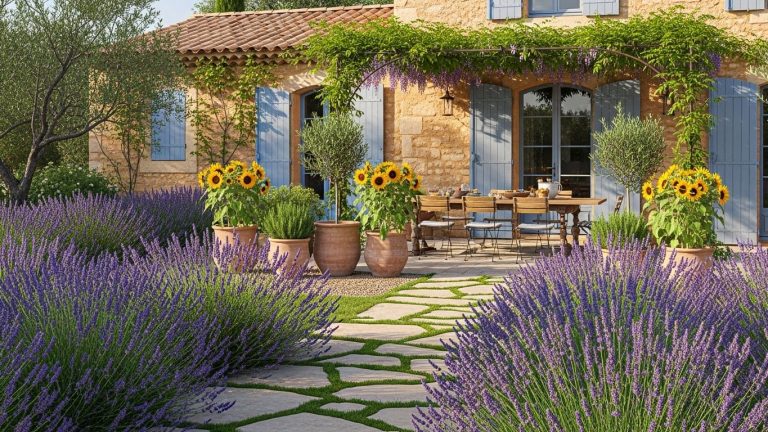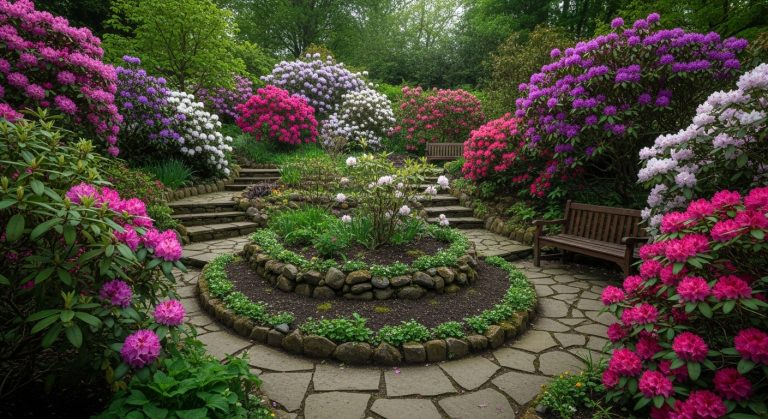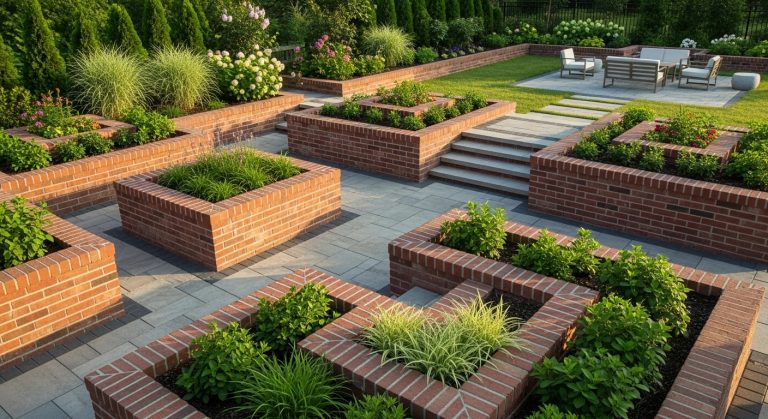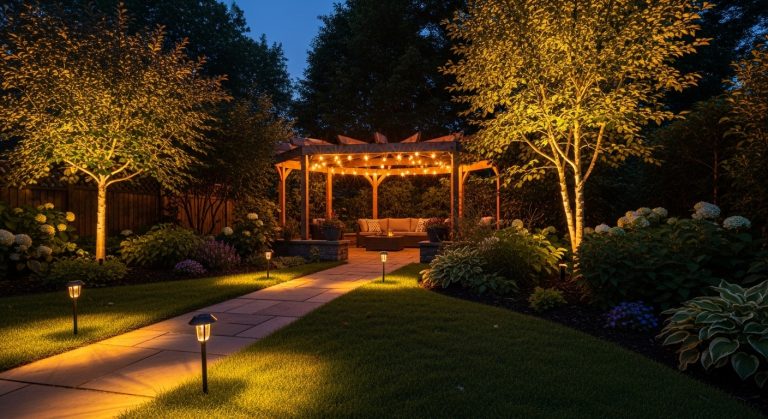Stone Raised Garden Beds: 15 Ideas to Build the Most Beautiful, Low-Maintenance Yard Ever
Let’s be honest — there’s something irresistibly grounding about working with stone. It’s ancient, timeless, and somehow makes every garden feel a little more permanent, like it belongs to the earth itself. I’ve seen wooden raised beds rot, metal ones rust, and plastic ones fade, but stone? It just ages beautifully — like the garden version of a fine wine.
If you’ve ever dreamed of a lush backyard oasis framed by natural textures, stone raised garden beds might just be your holy grail. They blend structure with soul — practical for growing vegetables, herbs, or flowers, yet decorative enough to transform plain spaces into picturesque corners.
In this guide, we’ll explore 15 creative, realistic, and personality-filled ideas for using stone to elevate your garden design — literally and figuratively. You’ll get pros, cons, personal takes, and a few hard-earned lessons from garden enthusiasts who’ve gone all in on the stone aesthetic. Ready to dig in (pun intended)? Let’s rock this.
1. Classic Fieldstone Raised Beds — Rustic Charm That Never Fades
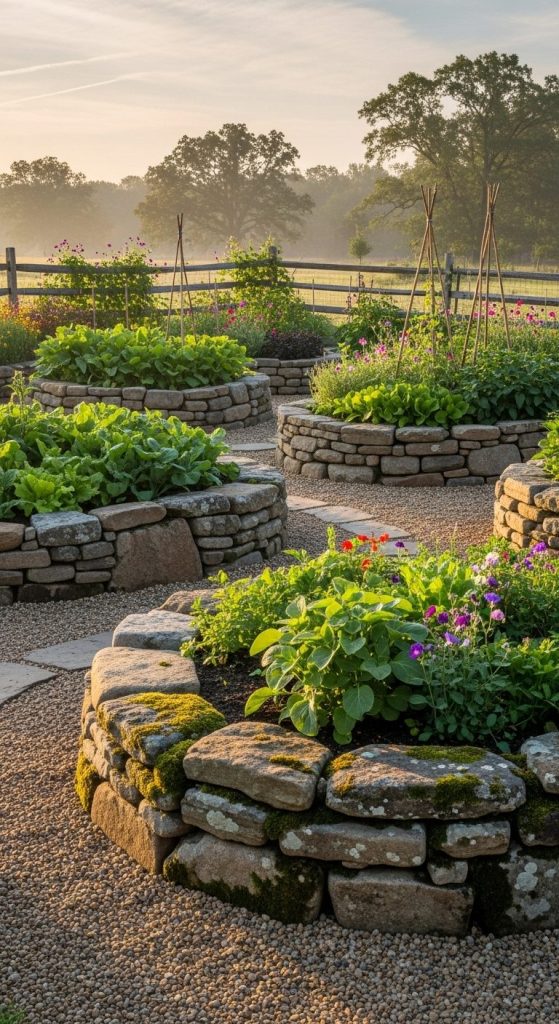
There’s something wonderfully nostalgic about fieldstone — those irregular, earthy rocks that look like they’ve been pulled straight from a farmer’s field.
Pros:
- Authentic rustic feel: Each stone’s irregularity adds texture and warmth.
- Durability: Fieldstone lasts decades, even in wet climates.
- Blends naturally: Perfect for cottage gardens or rural settings.
Cons:
- Labor-intensive: Fitting stones together is like solving a 3D puzzle.
- Uneven surfaces: May not suit ultra-modern gardens.
Fieldstone beds feel personal — each rock tells a story. IMO, if your garden leans toward cozy and traditional, this is the look you’ll never regret.
2. Dry-Stacked Stone Beds — The Ancient Art of Stability Without Mortar

Dry-stacking is both an art and a test of patience. Stones are carefully balanced without mortar, relying on gravity and friction.
Pros:
- Completely natural: No concrete or chemicals.
- Adjustable: Easy to move or rebuild later.
- Breathable walls: Great drainage and root aeration.
Cons:
- Skill-dependent: Needs precision and practice.
- Less permanent: Can shift with heavy rain or frost heave.
When done right, dry-stacked beds look effortlessly old-world — think “ruin chic.” It’s a craft worth learning if you want beauty and eco-friendliness in one go.
3. Retaining Wall Blocks — The Modern Stone Look
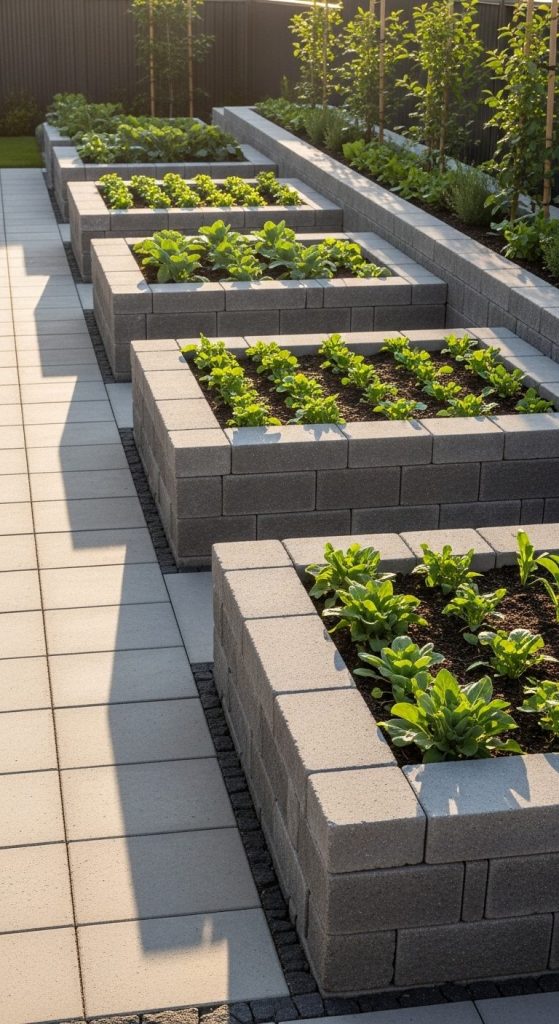
Sometimes you want the look of stone without the headache of sourcing real rock. Retaining wall blocks are pre-shaped, easy to stack, and made for clean lines.
Pros:
- Uniform design: Perfect for symmetry lovers.
- Quick assembly: Ideal for DIY beginners.
- Durable concrete mix: Built to last through seasons.
Cons:
- Artificial feel: Doesn’t have the character of real stone.
- Heavier carbon footprint: Manufactured material.
Still, if you like tidy geometry and modern appeal, this is the stone raised bed that screams “low maintenance, high style.”
4. Limestone Beds — Elegant, Light, and Airy
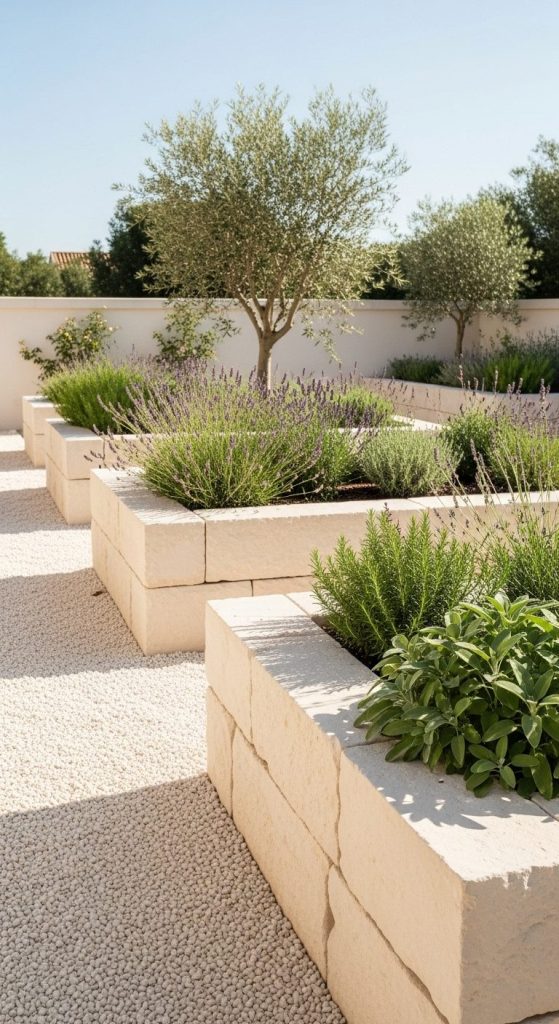
Limestone gives off that serene Mediterranean vibe — pale, cool, and timeless.
Pros:
- Brightens shady areas: Reflects sunlight beautifully.
- Naturally alkaline: Great for herbs like lavender and rosemary.
- Refined aesthetic: Works well with white gravel paths or olive trees.
Cons:
- Not acid-friendly: Avoid for blueberries or azaleas.
- Can erode slightly in acidic rain zones.
If you’re chasing that “Provence garden” aesthetic, limestone raised beds are practically a passport to southern Europe.
5. Gabion-Style Stone Beds — Industrial Meets Organic

You’ve probably seen those wire cages filled with rocks — that’s a gabion. And they’re not just for highways; they’re a design statement.
Pros:
- Architectural appeal: Great contrast between metal and stone.
- Highly customizable: Choose your rock size, color, or pattern.
- Extremely durable: Resistant to erosion and cracking.
Cons:
- Industrial vibe: Might clash with softer landscapes.
- Wire mesh can rust over time.
Gabions bridge the gap between rugged and refined. They’re perfect for minimalist or urban gardens needing structure with soul.
6. Flagstone-Lined Garden Beds — The Patio Blend
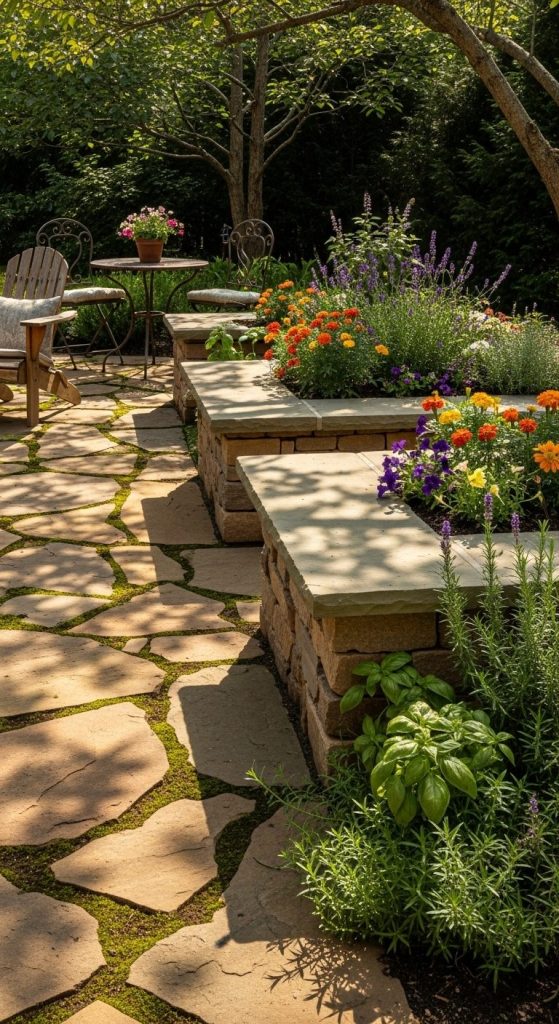
Imagine a raised garden that flows seamlessly into your flagstone patio. That’s the beauty of this design.
Pros:
- Cohesive outdoor design: Ties hardscaping and gardening together.
- Wide stone edges: Great for sitting or placing tools.
- Non-slip surface: Practical and aesthetic.
Cons:
- Pricey material: Flagstone isn’t cheap.
- Heavier lifting required.
If you spend a lot of time outdoors entertaining or relaxing, flagstone beds make the entire yard feel unified and intentional.
7. Reclaimed Stone Beds — Sustainability with Character
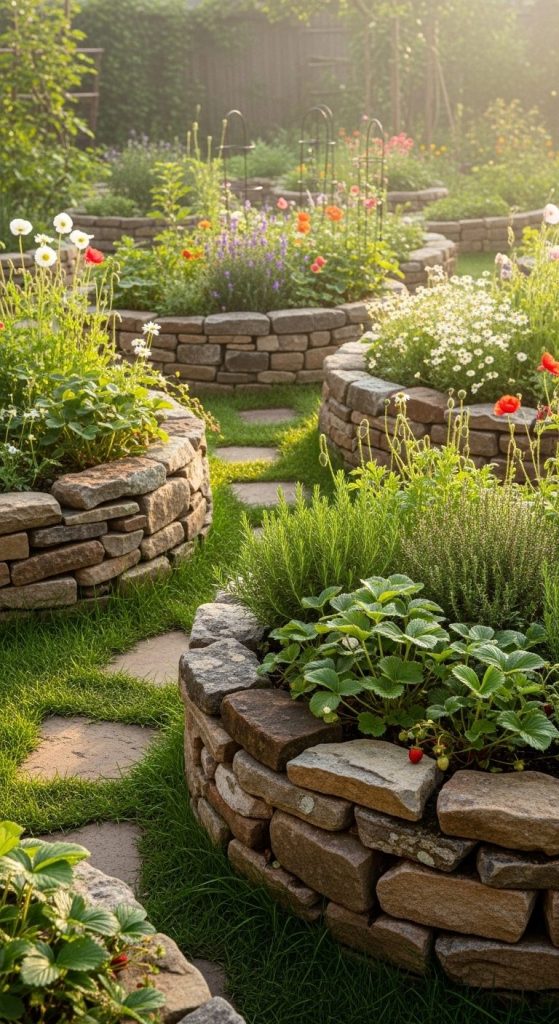
Ever find a pile of leftover stone from an old wall or demolished house? That’s your goldmine.
Pros:
- Eco-friendly: Reuses existing materials.
- Rich patina: Natural aging adds personality.
- Budget-friendly: Often free or inexpensive.
Cons:
- Inconsistent sizes: May require cutting or creative stacking.
- Limited availability.
There’s real joy in knowing your raised bed has history embedded in it — literally. Reclaimed stone adds emotional texture, not just visual.
8. Curved Stone Beds — Breaking Away from the Box
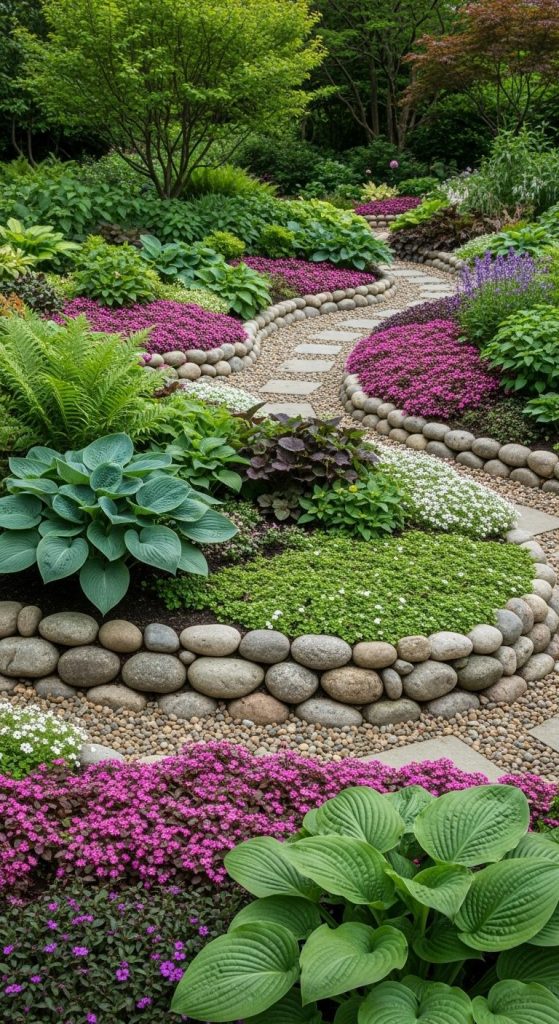
Who says raised beds have to be rectangular? Curves soften a garden’s edges and invite movement.
Pros:
- Organic flow: Mimics natural landscapes.
- Adds visual interest: More dynamic than straight lines.
- Easier on foot traffic paths.
Cons:
- Harder to design: Requires planning and shaping stones carefully.
- Takes more space.
Curved stone beds feel alive — they guide your eye and make even small gardens feel larger.
9. Stone-Tiered Gardens — Leveling Up Your Yard
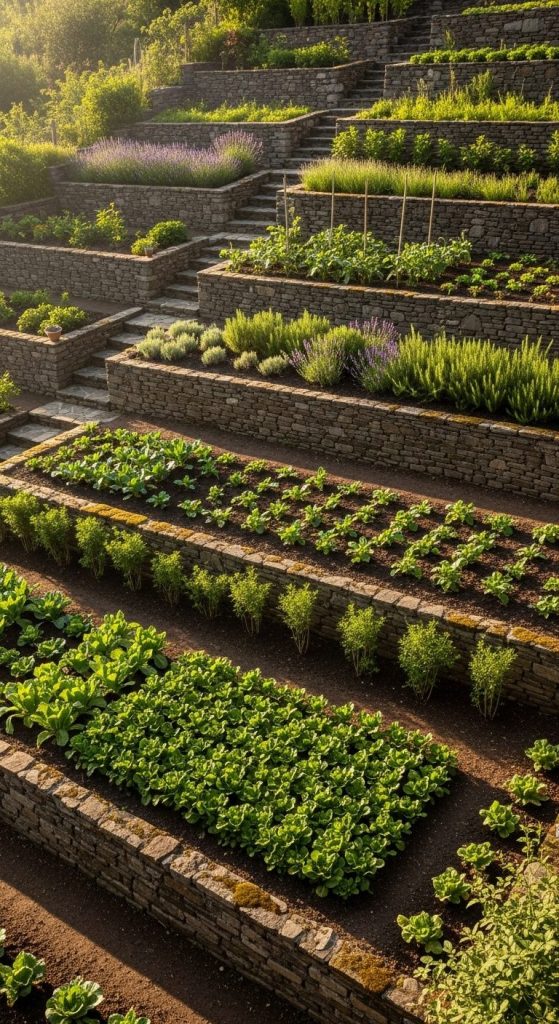
If you’ve got a sloped yard, don’t fight it — use it. Terraced stone raised beds transform uneven ground into a masterpiece.
Pros:
- Erosion control: Stabilizes soil effectively.
- Visually stunning: Adds depth and layers.
- Efficient water flow: Natural drainage between levels.
Cons:
- Labor-intensive: Building on a slope takes engineering.
- Higher cost due to materials and design.
Every time I see a terraced stone garden, I think of Tuscany. It’s functional art that turns problem areas into photo ops.
10. Mixed-Material Beds — Stone Meets Wood or Metal
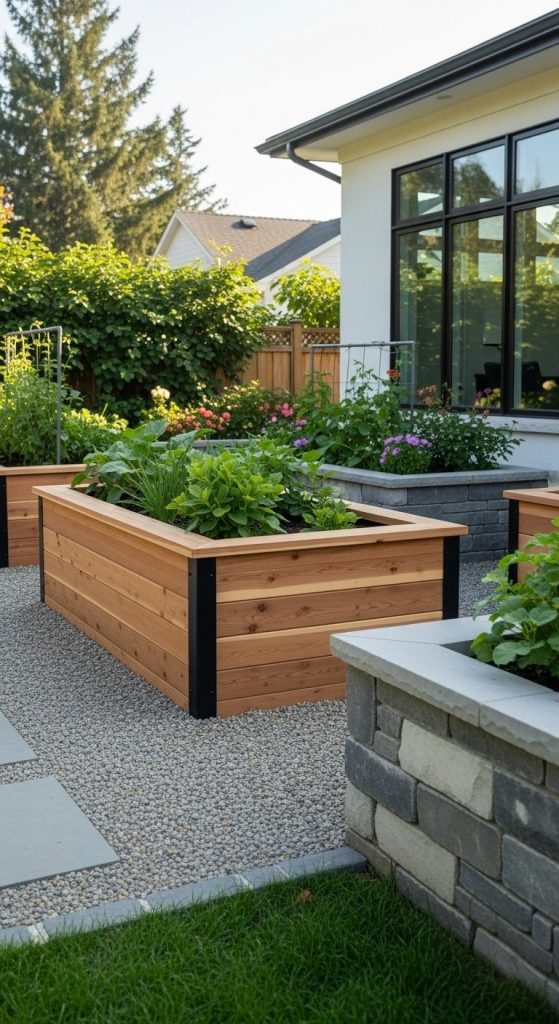
Why pick one when you can blend materials? A stone base with wooden caps or metal accents can look both rustic and modern.
Pros:
- Best of both worlds: Warm wood tones meet stone sturdiness.
- Unique design: Few gardens look exactly alike.
- Easier repairs: Replace one material without rebuilding all.
Cons:
- Potential clashing styles: Needs careful color and texture balance.
- Maintenance mismatch: Wood may weather faster than stone.
Mixing materials is like mixing fashion — when it works, it really works.
11. Stone Herb Spirals — Functional and Whimsical

A stone herb spiral is a vertical raised bed that coils upward, creating microclimates for different herbs.
Pros:
- Space-saving: Fits dozens of herbs in one compact area.
- Drainage control: Dry herbs on top, moisture lovers below.
- Whimsical charm: Instantly eye-catching.
Cons:
- Initial complexity: Tricky shape for beginners.
- Not ideal for root-heavy plants.
Herb spirals combine science and art — perfect for gardeners who love clever design with purpose.
12. Boulder Borders — Big Stones, Big Impact

Sometimes, bigger really is better. Using boulders as the boundary for your raised beds creates a bold, natural look.
Pros:
- Extremely durable: They won’t budge, ever.
- Striking aesthetics: Adds drama and permanence.
- Low maintenance: Just… stays there.
Cons:
- Heavy and hard to move: Requires machinery or serious muscle.
- Can dominate small spaces.
If you’ve got the room, though, boulder borders make your garden feel ancient and indestructible — in a good way.
13. Stone Veneer Beds — Lightweight, Polished, and Affordable
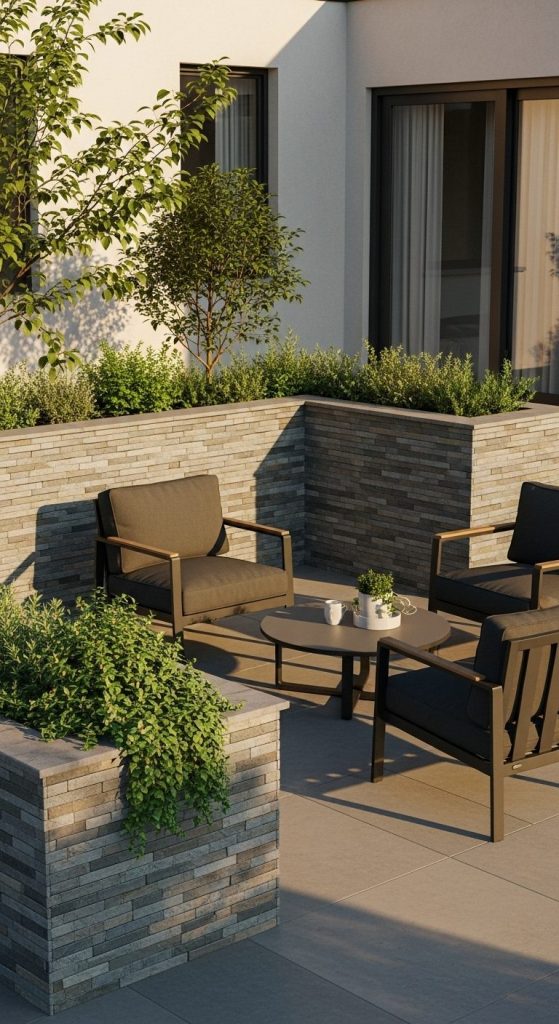
Want the stone look but not the stone weight? Stone veneer panels offer an accessible alternative.
Pros:
- Easy installation: Attach to existing wood or block structures.
- Lightweight: Great for decks or patios.
- Sleek finish: Consistent and clean appearance.
Cons:
- Not as durable as solid stone.
- Can peel if installed poorly or exposed to extreme moisture.
Perfect for renters or light DIYers who want aesthetic impact without the long-term commitment.
14. Stone Edging for Existing Beds — The Subtle Upgrade

You don’t have to rebuild everything — sometimes just lining existing beds with stone does the trick.
Pros:
- Quick facelift: Instant structure and polish.
- Budget-friendly: Uses fewer materials.
- Easy to maintain: Mow or weed right up to the edge.
Cons:
- Less height: Doesn’t raise soil as much.
- Limited root protection.
Stone edging is like adding a great frame to a painting — the garden stays the star, but everything looks sharper.
15. Stone Water Feature Beds — Serenity Meets Structure
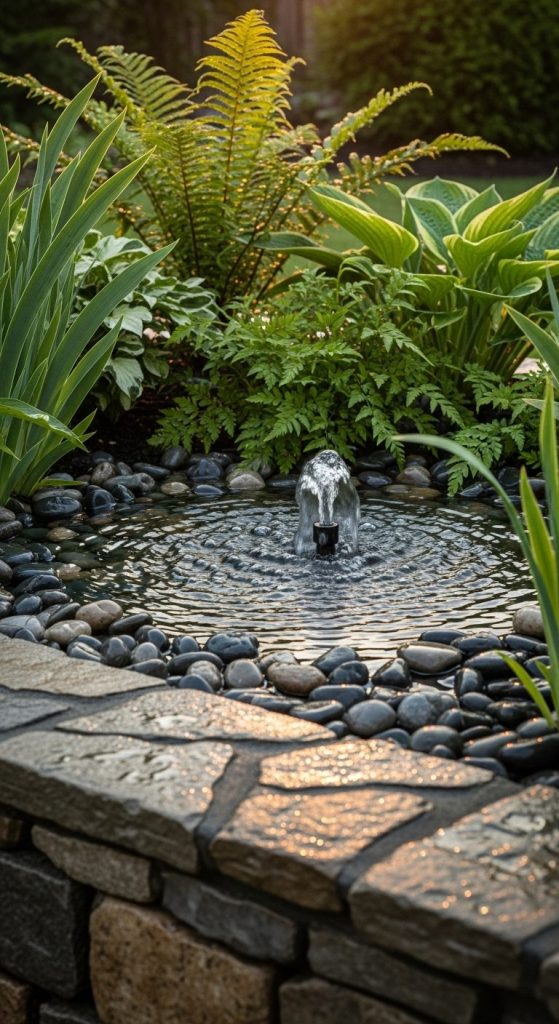
Combining a raised stone bed with a small water feature (like a bubbling fountain or pond) creates pure backyard zen.
Pros:
- Sensory experience: The sound of water adds calm.
- Wildlife magnet: Attracts birds and pollinators.
- High-end aesthetic: Looks custom-built and luxurious.
Cons:
- Requires plumbing or pump setup.
- More maintenance: Algae, cleaning, winter care.**
But honestly? Nothing beats watering your veggies next to a softly trickling fountain. It’s therapeutic gardening at its finest.
Conclusion
At the end of the day, stone raised garden beds aren’t just about plants — they’re about permanence, personality, and pleasure. They transform your yard into a living sculpture, whether you choose rough-hewn fieldstone, clean-cut limestone, or a creative gabion cage.
Sure, they take more effort upfront. But every time you step into a garden framed by stone, you feel something deeper — a connection to the land, to time, to beauty that doesn’t fade.
If you’re still deciding which stone route to take, start small. Try edging or a single bed first, and feel how it changes the whole rhythm of your garden. Once you experience that grounded elegance firsthand, trust me — you’ll never go back to plastic or timber again.
Nature deserves a strong foundation — and stone gives it exactly that.

William Martin is a passionate bowler who spends most of his weekends playing the sport. With years of intense experience under his belt, William decided to share his knowledge by creating BOWLING OCEAN. Join me on this journey to explore the world of bowling and discover the tips and tricks to becoming a pro.


